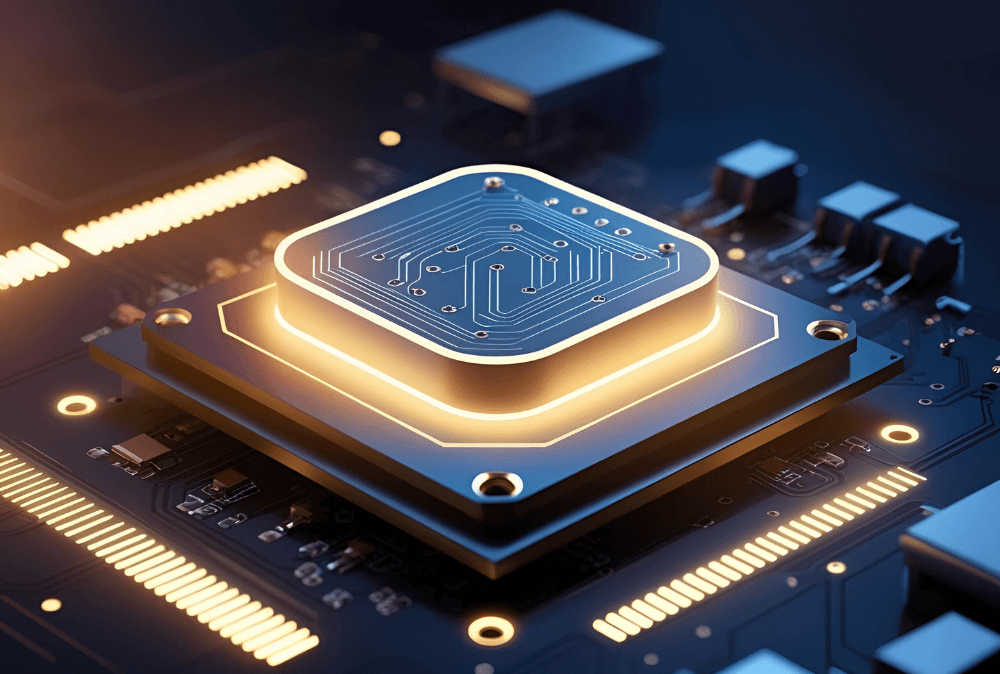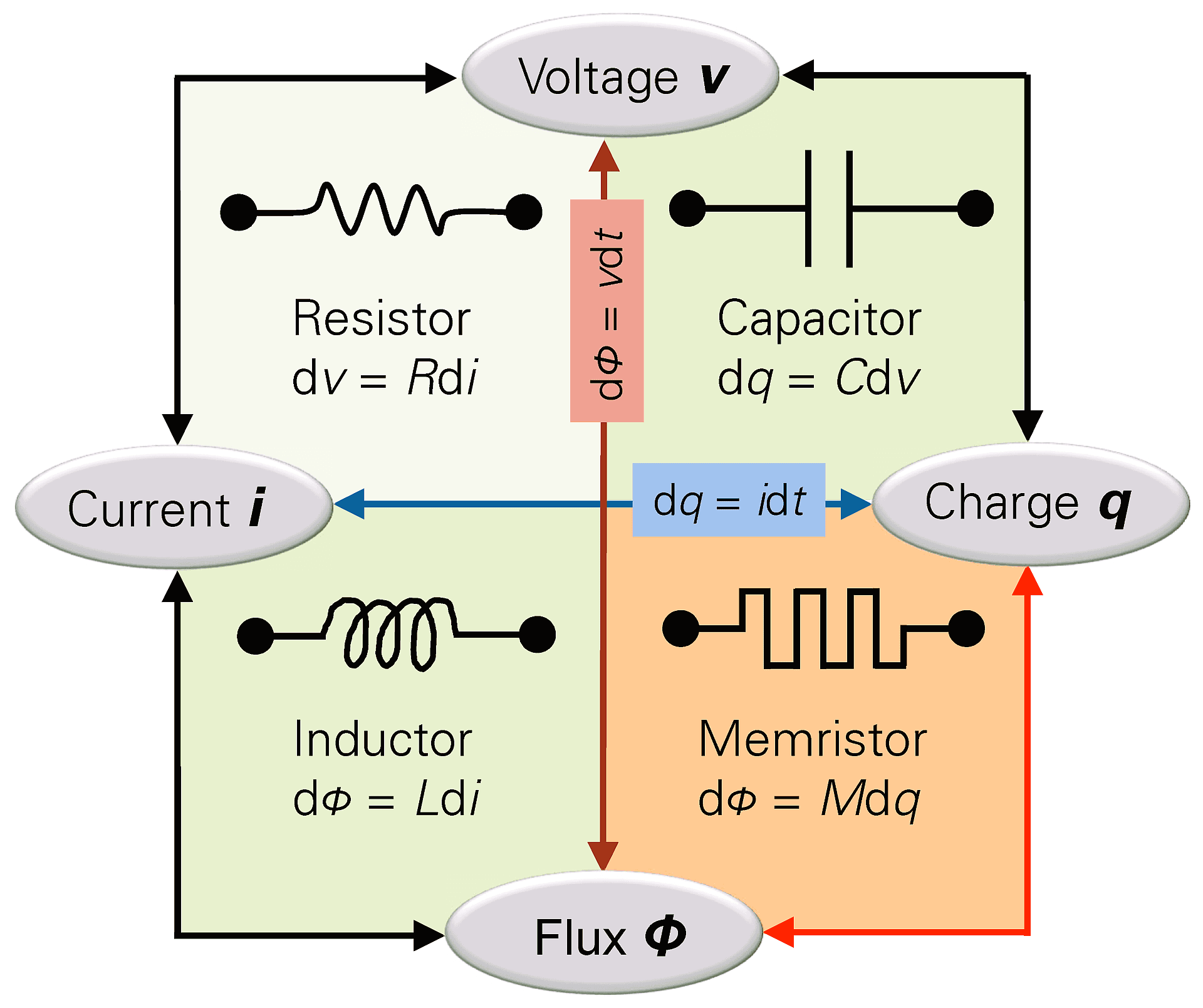Introduction to Memristors
What is a Memristor?
A memristor (memory resistor) is a fundamental electronic component that retains its resistance state even after power is removed. It was first theorized by Leon Chua in 1971 but was later physically realized by HP Labs in 2008. Unlike traditional resistors, which have a fixed resistance, Next-Gen Non-Volatile Memory dynamically adjust their resistance based on the history of electrical charge passing through them.
Significance of Memristors in Electronics
Resistive Memory Devices bridge the gap between traditional memory storage and processing, enabling highly efficient neuromorphic computing, non-volatile memory (NVM), and brain-inspired AI architectures. These tiny components are poised to revolutionize modern electronics by offering:
- Ultra-fast data storage comparable to RAM but with non-volatility like flash memory.
- Reduced power consumption, making them ideal for energy-efficient computing.
- Potential for analog computing, mimicking neural synapses for AI-driven applications.

Memristor as a Memory Resistor
Next-Gen Non-Volatile Memory function as non-volatile memory elements, storing and recalling resistance states without needing constant power. Their ability to switch between high and low resistance states makes them ideal for high-density resistive RAM (RRAM) technology, which is being explored as a future replacement for NAND flash memory.
How Memristors Work
Fundamental Principles of Memristance
Memristors function as resistors with memory, meaning their resistance depends on the history of voltage and current applied to them. This property, known as memristance, allows them to retain a resistance state even when power is removed. Unlike traditional resistors, which have a fixed resistance, Next-Gen Non-Volatile Memory adjust their resistance dynamically based on charge flow, enabling non-volatile memory storage.
Structure and Materials Used in Memristors
Resistive Memory Devices typically consist of a sandwiched structure with an active switching material placed between two electrodes. The commonly used materials include:
- Oxide-based materials (e.g., Titanium Dioxide – TiO₂): The most widely studied Memory Resistors utilize oxide films where oxygen vacancies influence resistance states.
- Organic Memory Resistors: These use conductive polymers, offering flexibility and compatibility with bioelectronics.
- Molecular Memory Resistors: Single-molecule devices that leverage redox reactions to change resistance, promising ultra-miniaturized electronics.
How Memristor Circuits Operate in Electronic Systems
These circuits provide an efficient way to implement non-volatile memory, neuromorphic computing, and logic operations. In memory applications, they replace traditional Flash and DRAM by offering higher density and faster switching speeds. In neuromorphic systems, Memory Resistors mimic biological synapses by modulating resistance based on input stimuli, leading to energy-efficient AI processing. Furthermore, Memory Resistors are being explored in adaptive learning circuits and security applications like cryptographic key storage.
Memory Resistors ability to store and process information at low power makes them a cornerstone of future computing architectures, from AI-driven devices to high-speed memory and bio-inspired computing systems.

Key Applications of Memristors
Memory Resistors have widespread applications across various industries, from artificial intelligence to cybersecurity and energy-efficient computing. Their ability to store data and process information simultaneously makes them a game-changer in modern electronics.
Neuromorphic Computing: Mimicking the Human Brain
Memristors are key components in neuromorphic computing, where they replicate the functionality of biological synapses. Unlike traditional transistor-based circuits, Memory Resistors can:
- Store multiple resistance states, mimicking synaptic weight adjustments in the brain.
- Enable energy-efficient, parallel processing, unlike conventional digital computing.
- Support real-time learning in spiking neural networks (SNNs), making AI more efficient.
High-Density Memory Storage: Replacing Flash and DRAM
Memristors are being explored as an alternative to NAND Flash and DRAM due to their:
- Non-volatility – Unlike DRAM, they do not require continuous power to retain data.
- Faster write speeds than traditional memory storage solutions.
- Higher endurance, reducing wear-and-tear issues common in flash storage.
AI and Machine Learning: Enhancing Computational Efficiency
Deep learning and AI models require vast computational resources. Memory Resistors enable:
- In-memory computing, reducing the bottleneck between memory and processors.
- Faster neural network training, making AI models more power-efficient.
- Low-power edge AI, crucial for mobile and embedded AI applications.
Edge Computing and IoT: Low-Power, High-Speed Data Processing
Next-Gen Non-Volatile Memory are ideal for IoT and edge computing applications due to their:
- Ultra-low power consumption, which extends battery life in wearables and smart sensors.
- Ability to process data locally, reducing latency for real-time applications like autonomous vehicles, smart cities, and healthcare monitoring.
Security and Cryptography: Enhancing Cybersecurity
Memristors can be used in hardware-based security solutions, such as:
- Physically Unclonable Functions (PUFs) for device authentication.
- Memory Resistors-based encryption, offering ultra-secure, energy-efficient cryptographic operations.
- Tamper-resistant circuits, enhancing hardware security against cyber threats.
Memristors in Neuromorphic Computing
Memristors are the building blocks of neuromorphic computing, a technology inspired by the biological structure of the brain. Unlike conventional von Neumann architectures, neuromorphic systems process and store data simultaneously, resulting in faster and more energy-efficient AI.
Role of Memristors in Brain-Inspired Computing
Next-Gen Non-Volatile Memory replicate the function of biological synapses, allowing for:
- Analog data storage, mimicking how synapses store information.
- Adaptive learning, adjusting resistance values similar to synaptic plasticity in the brain.
- Massively parallel processing, reducing AI computation time and power usage.
Energy-Efficient AI Processing
AI models, particularly deep learning networks, require vast amounts of energy. Memristor-based neuromorphic computing offers:
- Low-power AI acceleration, extending battery life for mobile and embedded AI devices.
- Faster processing speeds, reducing computational overhead.
- Event-driven computation, where energy is only consumed when needed (spiking neural networks).
Research Advancements in Neuromorphic Architectures
Leading tech companies and research institutions are investing in memristor-based AI chips. Some breakthroughs include:
- IBM’s NorthPole AI chip, designed for ultra-low-power neuromorphic computing.
- Intel’s Loihi, an energy-efficient memristor-powered neuromorphic processor.
- HP’s RRAM (Resistive RAM) research, exploring memristor-based memory for future AI applications.
Memristor Circuits and Their Design
Memristor-based circuits are reshaping modern electronics by offering non-volatile storage, high-speed data processing, and low-energy computation. These circuits differ from traditional semiconductor circuits by utilizing resistance-dependent memory, making them ideal for next-generation computing architectures.
Overview of Different Types of Memory Resistors Circuits
Memory Resistors circuits can be classified based on their structure, material composition, and application:
- Resistive RAM (RRAM) Circuits – Used in next-gen non-volatile memory storage solutions.
- Neuromorphic Circuits – Designed for AI applications, mimicking biological neural networks.
- Analog Computing Circuits – Enable high-speed mathematical operations without digital conversion.
- Crossbar Arrays – Efficient for matrix-vector multiplication in deep learning and AI hardware.
How Memristor-Based Circuits Enable Non-Volatile Storage
Unlike traditional volatile memory (e.g., DRAM, SRAM), Memory Resistors circuits retain data even after power loss. This feature makes them superior in:
- Instantaneous boot-up – Eliminating long startup times in computing devices.
- Energy-efficient memory solutions – Reducing power consumption in data centers.
- Low-latency access – Enabling ultra-fast retrieval of stored information.
Integration of Memristors with Existing Semiconductor Technologies
Researchers and companies are actively integrating Memory Resistors into CMOS-based architectures to enhance computing performance. Some notable advancements include:
- Hybrid Memristor-CMOS Processors – Combining the strengths of both technologies for AI computing.
- 3D Stacked Memristor Memory – Allowing higher storage density without increasing chip size.
- Memory Resistors-Based Logic Gates – Enabling energy-efficient computing beyond traditional transistors.
Challenges and Future of Memristors
While this technology offer immense potential, technical challenges still hinder their widespread commercial adoption. Scientists are working on overcoming these limitations to make such devices practical for mass production.
Technical Limitations of Memristors
Several roadblocks need to be addressed before it become mainstream:
- Stability & Reliability – Variability in resistance states affects performance over time.
- Reproducibility Issues – Manufacturing consistent Next-Gen Non-Volatile Memory devices is complex.
- Scalability Challenges – Integrating Memory Resistors into large-scale semiconductor fabs requires new production methods.
Current Research in Improving Memristor Performance
Ongoing studies focus on refining materials, circuit design, and fabrication techniques:
- Advanced Material Research – Scientists are exploring oxide-based, organic, and molecular Memory Resistors for better performance.
- AI-Driven Optimization – Machine learning is being used to fine-tune Memory Resistors switching mechanisms.
- 3D Memristor Stacking – Increasing storage capacity by layering multiple Memory Resistors arrays.
The Future Role of Memristors in Computing and Data Storage
Resistive Memory Devices are expected to reshape the future of computing, particularly in:
- Neuromorphic Computing – Brain-inspired AI systems with near-zero power consumption.
- Quantum Computing – Potential use in hybrid quantum-Memory Resistors architectures.
- Next-Generation Storage – Ultra-dense, non-volatile memory replacing NAND flash and DRAM.
Conclusion: Are Memristors the Future of Computing?
Memristors offer groundbreaking advantages, including:
- Low-power, non-volatile memory for energy-efficient computing.
- Brain-like processing capabilities for AI and neuromorphic computing.
- Ultra-fast, high-density storage as a potential successor to traditional memory solutions.
Comparison with Traditional Memory and Computing Methods
| Feature | Memristors | Traditional Memory (DRAM, Flash) |
|---|---|---|
| Energy Efficiency | ✅ Ultra-low power | ❌ Requires constant power |
| Processing Speed | ✅ Faster computation | ❌ Slower due to data transfer delays |
| Non-Volatility | ✅ Retains data after power loss | ❌ Requires refresh cycles |
| Scalability | ✅ 3D stacking possible | ❌ Limited by Moore’s Law |
Future Potential of Memristors in AI, IoT, and Quantum Computing
- AI & Neuromorphic Chips – Memory Resistors will power future brain-like AI processors.
- IoT & Edge Computing – Energy-efficient, instant memory solutions for IoT devices.
- Quantum-Memristor Hybrid Systems – Potential synergy between quantum computing and Memory Resistors technology.
Further Reading:
The world of computing and robotics is evolving rapidly, with groundbreaking technologies shaping the future. If you found this exploration of memristors fascinating, check out these related articles:
🔹 Magnonics: The Future of Spin-Wave Computing and Quantum Systems – Discover how spin-wave-based computing is paving the way for ultra-efficient quantum systems.
🔹 The Rise of Polyfunctional Robots – Explore the next generation of multi-functional robots revolutionizing industries.
🔹 Proto Alpha Robot: The Future of AI-Powered Robotics – Learn about an advanced humanoid robot equipped with AI-driven decision-making and real-world adaptability.
🔹 Optical Computing – See how light-based computing is set to revolutionize data processing speeds and energy efficiency.






